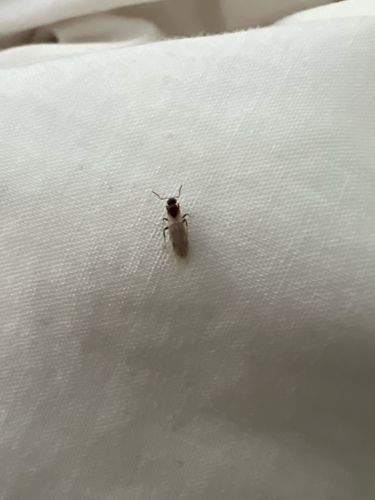Booklouse
Scientific Name: Psocoptera (various species)
Order & Family: Order Psocoptera, various families (e.g., Liposcelididae, Psocidae)
Size: 1-2 mm in length

Natural Habitat
Damp, warm, and humid environments. Found in homes (especially bathrooms, kitchens, basements, or areas with water leaks), libraries, museums, and warehouses, where they feed on mold, fungi, and starches.
Diet & Feeding
Mainly feed on mold, fungi, microscopic algae, starch-based materials (e.g., book bindings, wallpaper paste, flour, cereals), and sometimes insect fragments.
Behavior Patterns
Nocturnal and typically prefer dark, undisturbed, humid places. They are not known to bite humans or animals. They move quickly when disturbed but are generally cryptic. They reproduce rapidly, especially in favorable conditions (high humidity).
Risks & Benefits
Risks include potential contamination of food products, damage to books, paper, and other starch-containing materials by feeding on the mold and fungi that grow on them, or by their fecal matter. They can be an indicator of high humidity and moisture problems in a building. Generally, they pose no direct health risks to humans (they don't transmit diseases or bite), but some individuals might experience allergic reactions to their presence or their excretions.
Identified on: 9/16/2025